



Featured image: A random Geocities homepage, last updated sometime around 1997
Daniel Rourke visits the Photographers’ Gallery in central London and reviews their latest exhibit One Terabyte of Kilobyte Age by artists Olia Lialina and Dragan Espenschied, on THE WALL. Over an eight week period (18 April – 17 June 2013) they feature a non-stop stream of video captures of what they term as the lost city and its archival ruins. A documentation of a past visual culture of the web and the creativity of its users with new pages changing every 5 minutes. The project provides a glimpse into web publishing when users were in charge of design and narration in contrast to the automated templates of Facebook, YouTube and Flickr.
Sifting through a dormant internet message board, or stumbling, awestruck, on a kippleised [1] html homepage, its GIF constellations still twinkling many years after the owner has abandoned them, is an encounter with the living, breathing World Wide Web. At such moments we are led, so argues Marisa Olson, ‘to consider the relationship between taxonomy à la the stuffed-pet metaphor and taxonomy à la the digital archive.’ [2] How such descript images, contrived jumbles of memory and experience, could once have felt so essential to the person who collated them, yet now seem so indecipherable, stagnant, even – dare we admit it – insane to anyone but the most hardened retro-web enthusiast.
On show at London’s Photographers gallery until June 17th is an extensive archival exhibit designed to manage, reveal and keep these experiences alive. One Terabyte Of Kilobyte Age (1tb) is the fifth work to be commissioned for the Photographer Gallery’s ‘The Wall’, curated by two artists long associated with the era of the web the exhibition reveres: Olia Lialina and Dragan Espenschied. Perhaps best known for their book Digital Folklore (2009) the artists and retro-web evangelists have, with the 1tb project, strengthened their status as archivists, an impulse Hal Foster famously argued ‘concerned less with absolute origins than with obscure traces’ [3]. In the same year that Dragan and Olia launched their guide to the folk web, Yahoo! announced they were to close one of its greatest sources of inspiration: Geocities. A vast expanse of personal webpages, many of which had long since slid into html decrepitude, represented for Yahoo! little but financial embarrassment. So ancient and outmoded was Geocities that many contemporary browsers were incapable of capturing its essence, fragmenting images and link rolls randomly across modern laptop screens in an attempt to render their 800×600 pixel aura. Scraping and downloading the terabyte or so of data that made up the Geocities universe was thought important enough by some that a taskforce was put together, made up of technical wizards and wizardesses driven by the profound notion that all existent culture is worth saving. From Olia and Dragan’s webpage:
In between the announcement and the official date of death a group of people calling themselves Archive Team — managed to rescue almost a terabyte of Geocities pages. On the 26th of October 2010, the first anniversary of this Digital Holocaust, the Archive Team started to seed geocities.archiveteam.torrent.
Olia and Dragan’s gesture, to feed the wealth of culture contained in that torrent back to the masses in a palatable form, is a project whose fruition at the Photographer’s Gallery is but a minor part. After downloading, storing and sorting the 16,000 archived Geocities sites the task of exactly how to display them is a problem. Since most browsers would mangle the look and feel of the Geocities pages Olia and Dragan have turned to two main methods of re-representation. The first, let loose on an automated Tumblr blog that updates over 70 times a day, is an ever growing series of front-page screen captures. In this form 1tb bends to the will of a contemporary web user who concerns themselves with likes, reposts and uplinks.
Reflecting on the Tumblr-archive of the torrent-archive of the Geocities-archive, Olia and Dragan’s site contemporary-home-computing highlights particular screen captures that have garnered the most reposts and likes from their Tumblr followers. The results say much for the humour that still drives online culture, but perhaps little about the original contexts from whence those screen captures came. For instance, the screen captures that garner most attention are usually the ones that have failed a part of the retrieval/display/capture process. These ‘obscure traces’ may be GIF heavy sites, half loaded to interesting aesthetic affect, or, perhaps the most telling, captures that show nothing but the empty shell of a Netscape Navigator browser, caught forever like a millennium bug in digital amber.
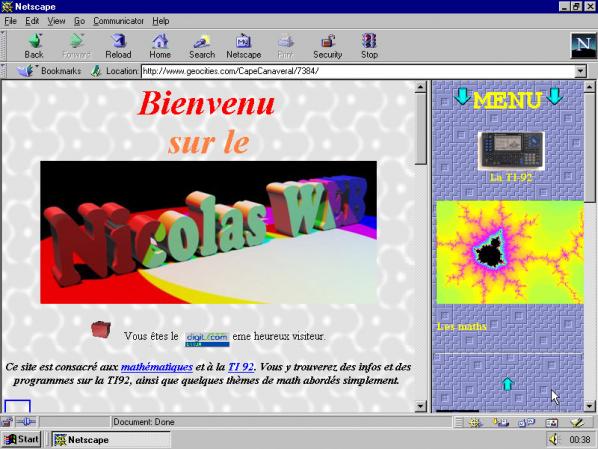
The second mode of capture and re-display takes place at the Photographer’s Gallery itself. Depicted on nine large intersecting HD video screens set into ‘The Wall’ of the entrance-cum-café, one’s first experience of the exhibit is ponderous. The display cycles through the vast array of Geocities homepages at five minute intervals, giving viewers a more than generous dose of 800×600 px nostalgia. Whether the websites that fade into view are a barrage of animated GIFs,insightful commentary on life in the late 1990s, or a series of barren ‘Under Construction’ assemblages, is up to chance.
As a reviewer, sent to derive something from the gallery experience, the wall leered at me with gestures that sent my inner taxonomist into a frenzy. Confronted with such tiny slithers of the archive, in such massive doses, it quickly becomes obvious that the real potential of the project has not been quite realised. Rather than static screen captures The Wall shows cleverly rendered quicktime videos, allowing the GIF whiskers of a Hello Kitty mascot to quiver once more. If you are lucky, or have the patience to watch a long series of the sites fade into view, you’ll be greeted by flickering ‘Welcome’ banners, by cartoon workmen tirelessly drilling, by unicorns cantering and sitemeter bars flashing. But The Wall also feels wholly at odds with its content, caught up in a whirl of web nostalgia that minimises the lives, experiences and aesthetic choices of a defining generation to static flashes that you can’t click on, no matter how much you want to. Archives are living, breathing entities wont to be probed for new meanings and interpretations. Whether depicted as static or faux animated, One Terabyte Of Kilobyte Age is a project with an endless surface, with little way for its viewers to delve deeper.
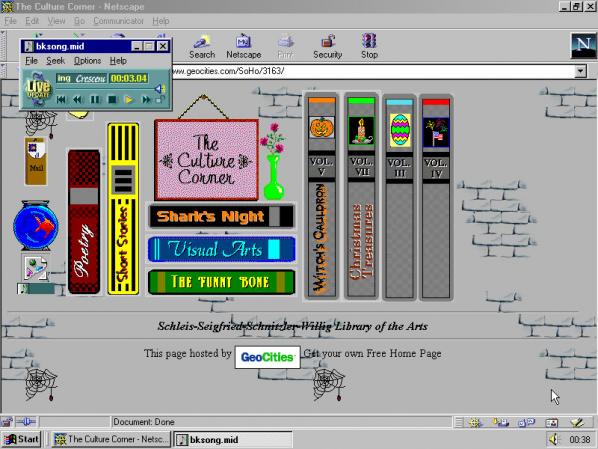
Trawling through the 1tb Tumblr is a much more visceral experience than the one that greets you at the Photographer’s Gallery, but the sense of a journey waiting to be embarked on is lost somewhat in the move to the Tumblr kingdom. Every five minutes offers a new chance to spot similarities on The Wall, to ponder on the origins of a site or, more profoundly, wonder where the people that toiled to make them are now. Before the days of user driven content, of Facebook timelines, and even before RSS feed aggregators, the whole web felt something like this. Today’s web is unarguably more dynamic, with a clean aesthetic that barely shifts behind the waves of content that wash over its surface. But the user has been relegated to shuffler of material.
The Geocities homepage was designed, and kept updated by an army of amateur enthusiasts, organising bandwidth light GIFs in ever more meaningful arrays, in the unlikely event that another living soul would stumble upon them. There is much to love about One Terabyte Of Kilobyte Age, and much to be learned from it given the time. But part of me wishes that the Photographer’s Gallery had given over their trendy café to a row of beige Intel 486 computer stacks, their unwieldy tube monitors better capturing the spirit of the web alá 1996. The clash between the 90s amateur enthusiast and the avid content shuffler of the 2010s is inherent in the modes of display Olia and Dragan chose for their project. Beginning from a desire to save and reflect on our shared heritage, 1tb now represents itself as pure content. An impulse to probe the archive replaced by an impulse to scroll endlessly through Tumblr streams, clicking like buttons on screen captures we hope will distract/impress/outrage our friends until the next cat video refreshes into view.
Go, go to the Photographer’s Gallery tomorrow, grab yourself a coffee and let the Geocities archive wash over you. If you can do it without Instagramming a snap to your friends, without updating your Facebook page with tales of your nostalgic reverie, if you can let the flickering screen captures do their own talking , only then can you claim you truly re-entered the kilobyte age.
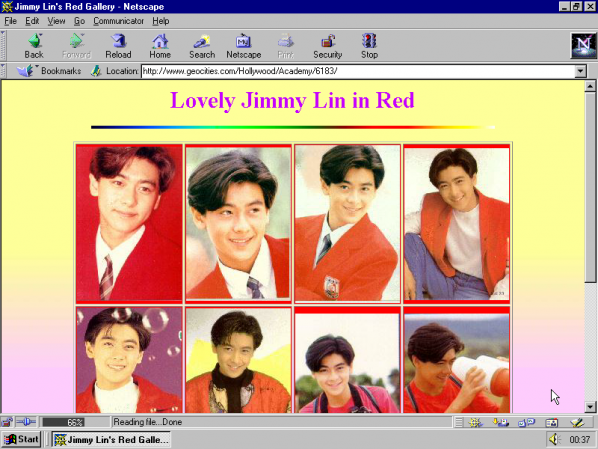
DoggieWoggiez! PoochieWoochiez! is a new video work (2012) by Everything is Terrible!, a self-described “found footage chop shoppe”. DoggieWoggiez! PoochieWoochiez! is an active catalog which describes, invents and destroys concepts as it arranges video footage into flows of multiple cuts that map the use of dogs in cinema and television. The structure of this review takes hints from the work it overlays. We dispensed with “original” writing and didactic detailing of what we as critics experienced. Instead, we unraveled multiple threads left hanging after watching DoggieWoggiez! PoochieWoochiez! We neglected to offer an appraisal of the worth of the work, and add to the number of words already in the world. Instead, we traced the flows passing through the video and developed a program of citations that provide a map of exit and entrance points-a map, as any map, that is as much about those making as about the territory described-which we hope will provide openings for a reader who has not yet watched the work, and provide expanded intersections for those who already have.
“This is the scenario: You are terminally ill, all medical treatments acceptable to you have been exhausted, and the suffering in its different forms is unbearable. Because the illness is serious, you recognize that your life is drawing to a close. Euthanasia comes to mind as a way of release.” 1
“Success consists of simply getting up one more time than you fall.” 2
“From whatever angle you approach it, the present offers no way out. This is not the least of its virtues. From those who seek hope above all, it tears away every firm ground. Those who claim to have solutions are contradicted almost immediately. Everyone agrees that things can only get worse. ” 3
“A positive anything is better than a negative nothing.” 4
“I think it’s because dog movies and dog footage tends to be the dumbest. It’s like the lowest common denominator amongst everything we’ve found, the most mediocre footage imaginable. I think that was a big motivator, and we just like dogs. It’s a nicer way to deliver horrible things about humanity. Instead of watching people be racist, which makes you feel terrible, you get to watch dogs be racist, and you’re like, ‘That’s a little better.'” 5
“Americans spent $50.96 billion on their pets in 2011. That’s an all-time high, and for the first time in history more than $50 billion has gone to dogs, cats, canaries, guppies and the like, the American Pet Products Association reports. Food and vet costs accounted for about 65 percent of the spending. But it was a service category one that includes grooming, boarding, pet hotels, pet-sitting and day care that grew more than any other, surging 7.9 percent from $3.51 billion in 2010 to $3.79 billion in 2011.” 6
“So we have a corpse on our backs, but we won’t be able to rid ourselves of it just like that. Nothing is to be expected from the end of civilization, from its clinical death. In and of itself, it can only be of interest to historians. It’s a fact, and it must be translated into a decision. Facts can be conjured away, but decision is political. To decide on the death of civilization, then to work out how it will happen: only decision will rid us of the corpse.” 7
2:39 . Black and white footage of a clothed dog sleeping in hay.
2:41 . Saint Bernard laying on the floor trying to drink champagne out of a bottle.
2:42 . Black and white footage of a dog holding a bottle labeled “Hard Cider” in his mouth and drinking.
2:43 . Dog with bandana sitting at table licking the foam from a beer.
A hand pouring beer into a dish filled with dog food.
2:44 . A club. Multiple young women filling the face of a puppet dog full of liquor bottles.
2:45 . A dog wearing a jersey with the number one peeing on a referee’s ankle.
2:47 . A dog lifting its leg on a pants suit leg.
A bulldog in a spiked collar peeing on a floor mat that says “I [heart] Acting.”
2:48 . A dog peeing on a metal catwalk, shot from below.
2:49 . Jack Nicholson holds a small dog up and away from his chest as the dog pees.
A man lying on a floor is shot below and through a dogs legs, the dog’s urine stream is hitting him in the face.
2:51 . A similar shot, reversed. Another man, wearing a fur hat, is buried to his neck in sand and ice. A dog urinates into his mouth.
2:51 . The same bulldog in spiked collar lifts his leg to pee. A small rocket comes out of from beneath him.
2:52 . A similar shot from the other side, a different dog is urinating flames.
“I am for an art that embroils itself with the everyday crap & still comes out on top.” 8
“Trash collection is the business of public sanitation; its recycling, the very height of capitalist alchemy, turns everything into grist for commodification’s mill. But it is also a strategy of aesthetic sublimation that, according to Thomas Crow, is internal to modernism (he has analyzed the cyclical aspect of this in terms of the incorporation of the ‘low’ by the ‘high’)” 9
“Classification in the widest sense is, along with astronomy, probably one of the oldest scientific pursuits undertaken by man. In the most general terms classification is the process of giving names to a collection of objects which are thought to be similar to each other in some respect. The ability to sort similar things into categories is obviously a primitive one, since it would seem to be a prerequisite of the development of language, which consists of words which help us to recognize and discuss the diSerent types of events, objects and people we encounter; each noun in a language is a label used to describe a class of things which have striking features in common. Thus for example, we name animals as cats, dogs, or horses and such a name collects individuals into groups.” 10
“I am for an art that imitates the human, that is comic, if necessary, or violent, or whatever is.” 11
“What is it that moves over the body of a society? It is always flows, and a person is always a cutting off [coupure] of a flow. A person is always a point of departure for the production of a flow, a point of destination for the reception of a flow, a flow of any kind; or, better yet, an interception of many flows.” 12
“I am for the art of things lost or thrown away, coming home from school.” 13
“Cluster analysis, also called data segmentation, has a variety of goals. All relate to grouping or segmenting a collection of objects into subsets or “clusters,” such that those within each cluster are more closely related to one another than objects assigned to different clusters. An object can be described by a set of measurements, or by its relation to other objects.” 14
“And now, we have to start from scratch with this movie and go through thousands of VHS tapes and find those three minutes and put them in a pile until we have enough to make an hour-long movie. And yeah, it made it harder because we just fucking hate those movies.” 15
“Central to all of the goals of cluster analysis is the notion of the degree of similarity (or dissimilarity) between the individual objects being clustered. A clustering method attempts to group the objects based on the definition of similarity supplied to it.” 16
“[Claes Oldenburg] quickly saw that it didn’t take anything to make a Ray Gun: any right angle would suffice, even blunted, even barely perceptible. The Ray Gun is the ‘universal angle’: ‘Examples: Legs, Sevens, Pistols, Arms, Phalli-simple Ray Guns. Double Ray Guns: Cross, Airplanes. Absurd Ray Guns: Ice Cream Sodas. Complex Ray Guns: Chairs, Beds. Mondrian didn’t need to reduce everything to the right angle: everything is already a right angle. During the time of The Store, Oldenburg made huge numbers of Ray Guns (in plaster, in papier mache, in all kinds of materials in fact), but he soon saw that he didn’t even need to make them: the world is full of Ray Guns. All one has to do is stoop to gather them from the sidewalks (the Ray Gun is an essentially urban piece of trash: Oldenburg produced their anagram as Nug Yar:New York). Even better: he didn’t even need to collect them himself; he could ask his friends to bring them to him (he limited himself to accepting or refusing the find’s addition into the corpus, according to purely subjective criteria). Finally, there are all the Ray Guns one can’t move- splotches on the ground, holes in the wall, torn posters-but which one could photograph. The “inventory”is potentially infinite. And what should be done with this invasive tide? Put it in the museum.” 17
“I am for the art out of a doggy’s mouth, falling five stories from the roof.” 18
2:54 . A dog and man lay side-by-side. The dog’s legs are up and its belly is exposed to the camera. Voiceover: “Being a thief isn’t bad enough, you have to be a lush too.”
2:56 . A golden retriever puppy faces the camera with a drunken expression. The dogs lips move as he says “That’s the weirdestest grape juice ever.” He laughs.
3:02 . A dog jumps off a large desert rock onto another rock. He yells “Hasta la vista, kitty.” A mountain lion is shown launching into the air.
3:05 . Maniacal laughter is played over footage of a tree frog sitting on the top of a dog’s head.
3:06 . A Weimaraner sleeps under a blanket. Voiceover: “Do dogs dream? She dreams she’s a dear”
A ripple dissolve into the same dog with her head stuck through a tapestry of deer so that it appears that there is a deer with a dog head.
“Are there Oedipal animals with which one can ‘play Oedipus,’ play family, my little dog, my little cat, and then other animals by contrast draw us into an irresistible becoming? Or another hypothesis : Can the same animal taken up by two opposing functions and movements, depending on the case?” 19
“Writing about the dog who befriended him and his fellow-inmates in a concentration camp, and whom they named Bobby, Levinas says that this dog was ‘the last Kantian in Nazi Germany,’ because his joyful greetings reminded the prisoners of their human dignity. Yet, when questioned closely about the ethical status of nonhuman animals, Levinas is reluctant to ascribe to animals that ‘ethical face’ which he elsewhere has called (as Martin calls Sylvia’s face) ‘an epiphany.’ By contrast, says Levinas, the animal face is merely ‘biological,’ incapable of demanding the ethical response. Levinas denies that the dog can have a face in the ethical sense: ‘the phenomenon of the face is not in its purest form in the dog,’ he writes. ‘I cannot say at what moment you have the right to be called ‘face.’ The human face is completely different and only afterwards do we discover the face of the animal.’ In an article subtitled ‘Levinas Faces the Animal,’ Peter Steeves, with gentle irony, stages another face-to-face encounter between Levinas and Bobby, asking the philosopher: ‘What could Bobby be missing? Is his snout too pointy to constitute a face? Is his nose too wet? Do his ears hang low, do they wobble to and fro? How can this not be a face?'” 20
“We’ve always had a thing with how people treat little people at Everything Is Terrible!, like it’s really weird and creepy. Anybody who’s like a second-class being, when they’re used in videos, it comes across very creepy and gross. I think it’s the same thing with humans and dogs. They’re weirdly sexualized, they’re weirdly turned into little kids at the same time.” 21
“…individuated animals, family pets, sentimental, Oedipal animals each with its own petty history, ‘my’ cat, ‘my’ dog. These animals invite us to regress, draw us into a narcissistic contemplation, and they are the only kind of animal psychoanalysis understands, the better to discover a daddy, a mommy, a little brother behind them (when psychoanalysis talks about animals, animals learn to laugh): anyone who likes cats or dogs is a fool.” 22
“I think that’s a big reason why people use dogs the way they do, because I think we kind of hate ourselves so we dress up dogs like ourselves to mock ourselves. So you dress a dog up like a drunk human, and then you laugh at how ridiculous it is, but I think it’s therapeutic. We’re letting off steam about how much we hate ourselves.” 23
3:13 . A close-up of a shaggy dog who speaks. “It’s not a dream”.
3:16 . A large dog outside a car tells a small dog inside a car, “Bitches ain’t got no business being inside your head” The voice is or is similar to Samuel Jackson’s.
3:17 . A bloodhound with an ice pack on its head also has cartoon dream bubbles floating around it. The woman inside the bubbles says, brightly “Wake up!”
Another dog, turning his head to the camera, says “Who are those jokers?”
Return to the bloodhound, the floating woman says “It’s me, Jan.”
3:20 . A dog dressed as a pauper is grabbed from above and dragged to the side.
A dog wearing a bandana says “Great danes! This is terrible. But what can I do…”
This trails into a golden retriever saying “…I’m a dog.”
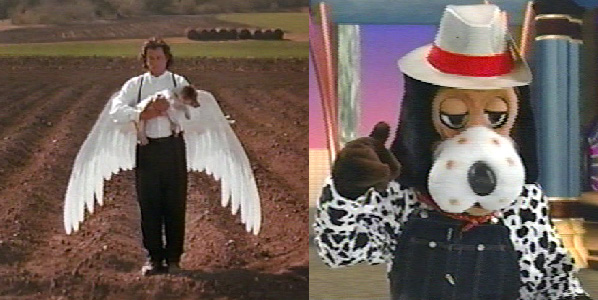
“What difference does it make if someone is terminal? We are all terminal.” 24
layla commented: 4-21-2008 9:01 PM “In 2007 Guillermo Vargas Habacuc a so called artist took an abandoned dog from the streets tied him to a very short rope to a wall in an art gallery and left a kettle of food on the other side of the room beyond his reach and left him there to slowly die of hunger and thirst. The socalled artist of such cruelty and the visitors of the gallery of art watched the agony of this animal. The dog finally died of famine surely after a painful absurd and incomprehensible torture. The prestigious Centralamerican Biennial of Art decided that this horrible act committed by this guy was art and Guillermo Vargas Habacuc has been invited to repeat his cruel actions in said Biennial in 2008. i seen this post on facebook and a few pictures of the poor innocent dog starving to death it broke my heart and i had to see if peta was aware of this sick man who thinks this i some great at creation.” 25
olivia commented: 5-10-2008 5:35 PM “i hate you. you should be put in the poor dog’s possision. you can’t imagine how many people hate you. almost more than a million. just so you know thats not art. the dog died because of you. you should go to prison because of this. you broke peoples’ hearts. i am really upset at you i could write all day long if i have to because you just waisted a life i wish i could waiste youres!!!!!! do you wish all the animals should die? you just made my day so so so horrible. im going to tell everyone what you just did. just so you know i’m cring. i hate hate hate hate you. you should be ashamed of your self. so listen to this just because you think your all that doesn’t mean that you can kill an other animal. i have 7 animals and you are not going to touch them! that dog did nothing to you. if heshe did doesn’t mean you should kill him! please don’t touch any other animal!!!!!! you suck!!!!!!!!!!!!!!!!!!!!!!!!!!!!!!!!!!!!!!!!!!!!!!!!!!!!!!!!!!!!!!!!!!!!!!!!!!!!!!!!!!!!!!!!!!!!!!!!!!!!!!!!!!!!!!!!!!!! P.s i hate youuuuuuuuuuuuuuuuuuuuu” 26
Renate commented: 5-5-2008 1:34 PM “Here’s a thought let’s tie up Guillermo Vargas at one of his own exhibits and starve him to death!” 27
Rainie M commented: 4-28-2008 2:59 PM “Oh Gods! How can anyone be so bloody heartless? Dead or dying animals are NOT art…things like this only come from sick minds. Is the human race devolving so much that we have come down to this as entertainment? If you want Art go to a Museum . Geez this is just sick…” 28
Tucker commented: 4-26-2008 10:43 AM “THIS IS DOWN RIGHT UNCALLED FOR DIGUSTINGCRUEL AND THESE PEOPLE NEED TO BE LOCKED UP AND CHARGED BIG TIME!!!!!!!!!!!!!!!!!!!!!!!!!!!!!!!!!!!!!!!!!!!!!!!!!!!!!!!!!! I AM CRYING SO HARD RIGHT NOW IT IS UNBELIEVABLE WHAT $IN PEOPLE DO TO ANIMALS AND THIS ALL NEEDS TO STOP NOW AND BIG TIME CHARGES AND JAIL TIME NEED TO BE STRONGER AND LONGER IN ALL STATES AND AROUND THE WORLD!!!!!!!!!!!!!!!!!!!!!!!!!!!!!!!!!!!!!!!!!!!!!!!!!!!!!!!!!!!!!!!!!!!!!!!!!!!!!!!!!!!!!!!!!!!!!!!!!!!!!!!!!!!!!!!!!!!!!!! SAVE THE ANIMALS!!!!!!!!!!!!!!!!!!!!!!!!!!!!!!!!!!!!!!!!!!!!!!!!!!!!!!!!!!!!!!!!!!!!!!!!!!!!!!!!!!!!!!!!!!!!!!!!!!!!!!!!!!!!!!!!!!!!!” 29
Angie commented: 4-24-2008 12:55 PM “I am so sickend by this whole so called art.. I am a artist myself. ! And i think someone need to tie this guy up and not feed him any food and have people watch him starve . Then he will realize how it feels. He gives a bad name to other artist out there!” 30
yf commented: 4-22-2008 2:32 PM “you know he really shoudl have starved himself and then do a ‘selfportrait’.. much more apt.. silly stupid man.. so pointless.. so banal.. people KNOW what skeletal skin and bones animals look like .. we have seen them.. we know what skeletal starved humans look like too infact.. we dont’ need a dumb dimwit 12 brained idiot to INTENIONALLY starve a dog in ORDER to produce his pointless ‘artwork’.. what a dumb stupid peabrained twit !” 31
Kristin Gleeson commented: 4-22-2008 1:29 AM “Yeah I’ve seen something like this before but what was it? Oh yeah the HOLOCAUST. Thousands of people collected subdued and starved to death. Was that an artistic masterpiece? If you call this art you’d have to call Hitler an artist I mean after all he was trying to make a culturally altering statement as well. It’s not art it’s sadistic immoral and completely disgusting. This poor creature did not deserve this and neither does any other animal on the planet.” 32
“Do not imitate a dog, but make your organism enter into composition with something else in such a way that the particles emitted from the aggregate thus composed will be a canine as a function of the relation of movement and rest, or of molecular proximity, into which they enter.” 33
“Its efficiency is striking. There is nothing extra, superfluous or obscure about Mr. Kulik’s performance. For all intents and purposes, he is a dog: he can be scary and unpredictable and territorial. After all, he’s in his prime, about 5 dog years old; visitors who wish to enter his cage may do so one at a time and must put on the quilted overalls and arm-guards that hang near the chained and barred door to his cage.” 34
“The choice of the term ‘pack’ for this older and more limited kind of crowd is intended to remind us that it owes its origin among men to the example of animals, the pack of animals hunting together. Wolves, which man knew well and from whom many of the dogs he uses derive, had impressed him very early. Their occurrence as mythical animals among so many peoples, the conception of the were-wolf, the stories of men who, disguised as wolves, assailed and dismembered other men, the legend of children brought up as wolvesall these things and many others prove how close the wolf was to man.” 35
“Saying it would be too confusing, a judge has denied the petition of a so-called ‘furry’ to legally change his name to Boomer the Dog. Forty-four-year-old Green Tree resident Gary Guy Mathews says he filed for the name change in June because he’s a fan of a short-lived 1980s NBC television series called “Here’s Boomer,” which featured a dog that rescued people.” 36
Where’s Waldo, #1.5 – Sun Aug 15, 2010 10:31 PM EDT “This boy ain’t wired right. I’ve heard of men wanting to be a women and women wanting to be men but this is a new one on me. Mom and Dad must have raised the poor kid in a kennel instead of a crib. Wonder what his favorite pup food was? Of course maybe he’s smarter than any of us thinks……or maybe not.” 37
dave-735909, Thu Aug 12, 2010 10:21 AM EDT “Why can’t we just respect people’s constitutional right to be crazy?” 38
Susi-Oh, Thu Aug 12, 2010 12:10 PM EDT “My sentiments exactly but how far do you want to take this? Should we just let him bark back when you ask him a question? Can you introduce a guy like that with a straight face? He’s big for a dog and might scare little children. Actually, even without the name change he looks a bit scary.” 39
Janet A., #15 – Thu Aug 12, 2010 10:59 AM EDT “If this idiot was truly a dog, we’d put him to sleep for being insane. Just a thought.” 40
wchall1949, #2 – Thu Aug 12, 2010 10:15 AM EDT “OMG – the really frightening thing here is that this guy is allowed to marry & reproduce!!! Truly scary!! What a moron!!!” 41
Sues-343312, #2.1 – Thu Aug 12, 2010 11:22 AM EDT “Well he is 44 yrs old has managed to not procreate up to now. Let’s just hope he meets up with a spayed female” 42
3:26 . A close-up of a crying child, with a dissolve of snow over his face. He says “Daddy…”
Close up of an adult man, he says “I don’t have a daddy.”
A girl wears a party hat. Lying on her bed, she talks to her brother, also wearing a party hat. She says “I just miss him so much…”
Cut to a different girl in pigtails addressing a bloodhound wearing a king’s crown and fur cape. She says “I miss him too.”
3:30 . Close-up of a crying boy. “I miss him, mom.”
Angry-looking farmer standing under a tree. He says “Your mother passed on.”
3:32 . A woman lays on a bed with a girl. “…to join the angels.”
A man looks up to the sky and gestures upwards “She’s in heaven.”
A woman with a party hat “watching over you right now.”
3:37 . A boy addresses a dog. “My dad used to do that.”
A boy and his mother talk as she drives. The boy says “He wants a dad.”
A woman sits next to a boy outside with a rocky hill behind them. He is looking through binoculars. She says “You remind me a lot of your dad sitting there.”
“When they’re your best friend it turns into this weird, gross, furry pile where you can’t tell where the lines are between human and dog, master and slave, and sex, and it’s just ugh.” 43
“Bestiality lowered a man to the level of a beast, but it also left something human in the animal.” 44
“A man has appeared before Limerick District Court charged with ordering his Alsatian dog to have sex with a 43-year-old mother of four, who died from an adverse allergic reaction to the intercourse.” 45
“Addressing the consent issue, Daniels writes, ‘[T]he truth is that animals, particularly domesticated ones, don’t consent to most of the things that happen to them.’ Animal sexual autonomy is regularly violated for human financial gain through procedures such as AI. Such procedures are probably more disturbing physically and psychologically than an act of zoophilia would be, yet the issue of consent on the part of the animal is never raised in the discussion of such procedures. Should the day Bentham speaks of arrive when animal rights are recognized by society and the law, an argument which speaks only to the zoophile’s right to fair exercise of his property rights in the animals he owns may prove an insufficient legal justification for acts of zoophilia.” 46
“In 1812 in a similar case in strongly Federalist Seneca County, New York,William Moulton, a fifty-eight-year-old veteran of the Revolutionary War and a prominent Democratic-Republican, was accused of buggering a bitch, which then delivered a litter of puppies that ‘had large heads, no hair on them nor tails, and on the side of their head they had small ears.'” 47
“I am for the majestic art of dog-turds, rising like cathedral.” 48
“The right of sovereignty was the right to take life or let live. And then this new right is established: the right to make live and to let die.” 49
“Though a single gull had already struck Melanie on the forehead the day before, the choice of the children’s party for this first fully choreographed attack suggests the extent to which the birds take aim at the social structures of meaning that observances like the birthday party serve to secure and enact: take aim, that is, not only at children and the sacralization of childhood, but also at the very organization of meaning around structures of subjectivity that celebrate, along with the day of one’s birth, the ideology of reproductive necessity.” 50
“Death is outside the power relationship. Death is beyond the reach of power, and power has a grip on it only in general, overall or statistical terms…death now becomes, in contrast, the moment when the individual escapes all power, falls back on himself and retreats, so to speak, into his own privacy. Power no longer recognizes death. Power literally ignores death.” 51
“Physician assisted suicide is fundamentally inconsistent with the physician’s professional role.” 52
“Even worse their comments continue to make no distinction between hierarchical and non-hierarchical organizations and institutions — simply rejecting all organization — which is tantamount, if you think about it for a minute, to proposing a future that lacks workplaces, religious centers, families, any kind of assemblies, and so on — a future in which lone individuals or small groups fend for themselves (a vision seemingly not too far from what they propose).” 53
‘It is critical that the medical profession redoubles its efforts to ensure that dying patients are provided optimal treatment for their pain and other discomfort. The use of more aggressive comfort care measures, including greater reliance on hospice care, can alleviate the physical and emotional suffering that dying patients experience. Evaluation and treatment by a health professional with expertise in the psychiatric aspects of terminal illness can often alleviate the suffering that leads a patient to desire assisted suicide.” 54
“Their vision of a commune offers very little guarantee of its own basic existence. There are no proposed methods for deciding what will be produced or consumed nor how much of each or its distribution in a socially responsible way.” 55
“The euthanasia of animals has been acknowledged by most animal protection organizations, including [The Humane Society of the United States], as an appropriate and humane means of ending the suffering of an animal in physical distress. It is also used widely to end the lives of animals who have severe behavioral problems, including aggression, and cannot be adopted into an appropriate new home because they pose a threat to the health and safety of people or other animals.” 56
“Once we know where it is we want to go, we can then act with the urgency needed to organize and build institutions and movements able to win change and create the necessary foundations for a future society.” 57
“Those who demand another society should better start to realize that there is none left. And maybe they would then stop being wannabe-managers.” 58
“This is the dog’s real trick, the height of animal acting. Not surprisingly, the imitated action is one of violence and must have been somewhat complicated; because all pet dogs, and dog performers most of all, must be nonviolent and cooperative, the animal actor here must go against its ‘nature’ in order to successfully set up the final tableau. That animals can be domesticatedmade to forego violence in order to serve peopleis the triumph of human culture over nature. That they can then be trained to appear violentto attack humansis the ironic confirmation of this subjection.” 59
“Should you battle on, take the pain, endure the indignity, and await the inevitable end, which may be days, weeks or months away? Or should you take control of the situation and resort to some form of euthanasia, which in its modern-language definition has come to mean ‘help with a good death’?” 60
“At the final stage of this evolution, we see the first socialist mayor of Paris putting the finishing touches on urban pacification with a new police protocol for a poor neighborhood, announced with the following carefully chosen words: ‘We’re building a civilized space here.’ There’s nothing more to say, everything has to be destroyed.” 61
3:43 A montage of eerily smiling children’s’ faces. Audio is the word “dad” played over and over as it overlaps and becomes “dog”. The words dad and dog are repeated in a loop. The video becomes a distorted montage of psychedelic faces of children and dogs. Eventually the words dad and dog becomes god.
4:03 The montage audio and video end abruptly.
A small dog says “I know something we can do.”
A shot of a Bernese, who says “Poop” then winks.

DoggieWoggiez! PoochieWoochiez! $20
http://www.everythingisterrible.bigcartel.com/product/doggiewoggiez-poochiewoochiez
http://www.everythingisterrible.com/
A Computer in the Art Room: The Origins of British Computer Arts 1950-1980
Catherine Mason
ISBN: 1899163891
JJG Publishing 2008
Computing anywhere else but its history often seems like a carefully guarded secret. This has been alleviated by activity around the resurrected Computer Arts Society in the 2000s, notably the acquisition of CAS’s archives by the V&A and the CaCHE project at Birbeck College which ran from 2002-2005. CaCHE, run by Paul Brown, Charlie Gere, Nick Lambert and Catherine Mason, produced conferences, exhibitions, and publications including the book “A Computer In the Art Room”, by Mason.
The art room of the title is the art department of British educational institutions prior to art becoming a degree-level subject. From the 1950s to the 1970s, when the cost of computing machinery dropped from the level where only major government and corporate organizations could afford them to the level where you only needed a second mortgage to afford one, the best way for artists to get access to the enabling technology of computing machinery was usually in an educational institution.
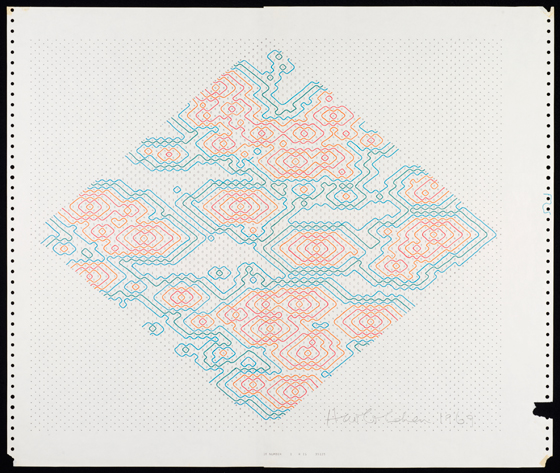
Mason starts out by describing the artistic and art educational situation in the UK at the time of the Festival Of Britain and the foundation of the ICA in London in the early 1950s. She then explains the structure and significance of the emergence of Basic Design teaching, the impact of the Coldstream report on art education, and the rise of the polytechnic colleges over the next thirty years. This provides vital context for the emergence of art computing teaching in the UK. It is also of more general interest for British art history. Conceptualism, performance, Land Art, the Hornsey Art School occupation, and the educational and media graphics that are currently being used as the basis of “hauntological” art all share this background and can better be understood and critiqued with better knowledge of it.
Basic Design courses started in London but didn’t remain there for long. They spread and matured throughout the UK, becoming entangled with the earliest teaching of art computing in provincial technical colleges. Mason traces the family trees of art computing teaching over time through these institutions and back to London-based institutions. Some of the names are familiar from art history (Richard Hamilton, Stephen Willats), some from art computing history (Harold Cohen, John Latham). Where the people involved cross over with cybernetic art, Conceptualism or other artistic currents Mason shows how their ideas fed into and from their art computing work.
The conceptual content of art computing followed the Bauhaus, cybernetics, systems, sociological and environmental influences on art from the 1950s to the 1970s. Its technological forms likewise followed those of mainstream computing. In the 1960s time was leased on mainframes or computers were built by hand. In the 1970s, minicomputers became available and art domain-specific software frameworks or programming languages were written by their users. In the 1980s, workstations with touch tablets, framebuffers, and increasingly proprietary software brought previously unprecedented power and ease of use at the cost of more fixed forms.
The history that I had to piece together as a student from hearsay and from hints in old publications, of the PICASO graphics language at Middlesex University that I found a print-out of the manual for when I was there in the 1990s, of Art & Language’s use of mainframe computers, of early cross-overs between art computing and dance, of cybernetic systems and games that attracted mass audiences before disappearing, is detailed, illustrated and contextualized in page after page of descriptions of hardware, software, institutions, courses and projects. The detail would be overwhelming where it not for Mason’s ability to bring the human and broader cultural aspect of it all to life.
There’s Jasia Reichardt’s Cybernetic Serendipity show at the ICA, Andy Inakhowitz’s Senster robot, John Latham’s dance notation experiments, The Environment Game, and computer graphics drawn with the languages and environments developed in UK art institutions. There’s pictures of the computer systems at the Slade, the RCA, Wimbledon and other art schools that serve as insights into the artists’ studios. There’s the Computer Arts Society, IRAT, APG. And, crucially, there’s the links between them told in a narrative that is coherent while still presenting the breaks and false starts in the story.
The history of “A Computer In The Art Room” reads all too often as brief moments of individuals triumphing against the odds to produce key works of art computing then fading into obscurity, academia or commerce. But any art history that considers a specific context at such a level of detail will look like this. Mason describes works, institutions and artists that deserve broader recognition, although she is under no illusion about how far the road to that recognition may be, citing the example of how long it has taken for photography to be recognized as art in the culturally conservative UK.
The social and pedagogical changes of the period covered by “A Computer In The Art Room” reflect a time of hope and ambition for education in society that made the academy less remote. Mason provides the social, technological and educational context needed to appreciate the very real achievements of art computing that she describes against this backdrop. As a slice of art history this is richly detailed. It touches on subjects far beyond art computing that will help any art student of history better understand the period covered. And it is both a relief and an inspiration to finally have a public record of this important aspect of the history of art computing in the UK.
The text of this review is licenced under the Creative Commons BY-SA 3.0 Licence.
Classic video games such as Pong, Tetris, Space Invaders, Pac Man and Super Mario have in the past decade inspired many artists in their work. The common link between all of these games is that they are very easy to learn and play. There is no need for manuals, just a few simple instructions on the screen. The graphics are simple, the colours few, the characters and style are pixelated. These games have influenced a whole generation and have over time become a part of our cultural heritage. Even today, these games still amuse and fascinate players and have also inspired various artists to use them in their art. In a series of articles, we will look at some classic games and give examples of how they have been used in art and what impact they have made on the art scene. First out is PONG.
It was the American physicist William Higinbotham who in 1958 created what many consider to be the first computer game. The game was called “Tennis for Two” and was played on an oscilloscope with help of a simple analogue control.

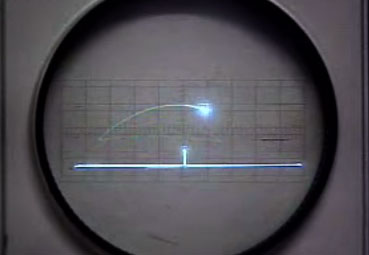
Click here to view video on Youtube…
It took, however, until 1972, when the Atari Company, founded by Allan Alcorn and Nolan Bushnell, picked up the idea and created a commercial version and called it PONG, before the game became one of the first real big sellers for the computer games industry. PONG is a simple, minimalistic game that consists of two rectangles and a square, which symbolize two tennis racquets and a ball. You can either play against another opponent or against the computer. In this simplified version of tennis, the goal is to hit the ball so the opponent misses it.
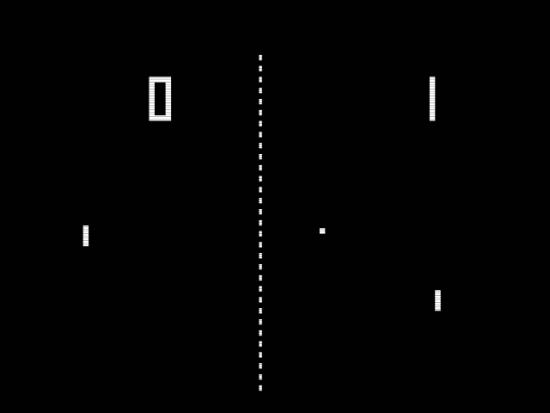
PONG is probably the videogame that has inspired most artists over the past decade. When the Computer Games Museum in Berlin in 2007 organized a major exhibition entitled “pong.mythos” over 30 artists attended with works of art inspired by PONG. The catalogue explains why PONG fascinated so many artists: “No other video game has been the origin of artistic production quite as often as the simple black-and-white tennis game. In addition to its popularity, it seems to be this minimalism that especially appeals to artists, since the playing pattern is a virtual prototype of the essence of each and every communication situation: the ball as the smallest possible unit of information, oscillating between sender and receiver” (from the catalogue “pong.mythos” 2006).
The artist group /////////fur//// showed their “Pain Station” (2001) in which the player who missed the ball were punished with physical pain, a blow on the hand, heat or an electric shock. “Pain Station” connects the physical world with the virtual and the virtual player’s mistakes turn actual real pain.
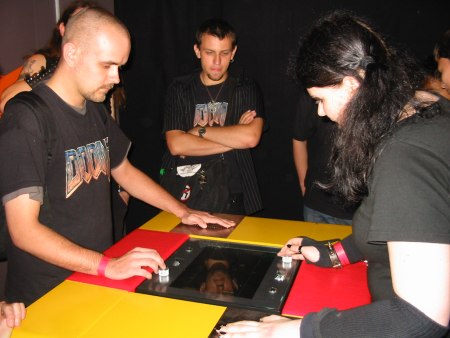
The artist group Blinkenlights working in the urban environment was represented with a project that transformed a large office building at Berlin Alexanderplatz to a digital screen where passersby could play PONG on the facade with the help of their mobile phones. In the artists S. Hanig and G. Savicic’s work “BioPong” (2005) the ball was replaced with a living cockroach where the players would try to push the insect over to the other side. And in the group Time’s Up version “Sonic Body Pong” (2006) the ball in the game was only a sound which the players could hear in their headphones and with help of large green rectangles on their heads they would try to hit the sound from the ball.
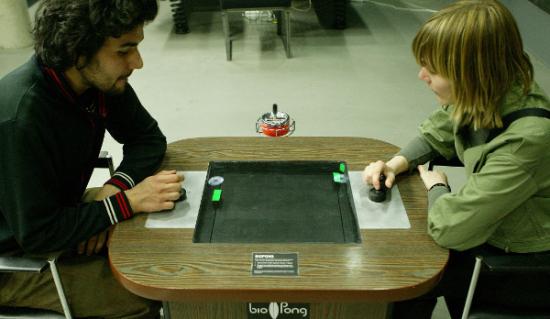
There are also many other examples that were not included in the exhibition “pong.mythos”. As early as 1999, the artist Natalie Bookchin made “The Intruder”, a work where PONG was one of 10 different videogames that she used to create an interactive artwork by Jorge Louis Borges short story “The Intruder”. The Danish artist Anders Visti mixed the game PONG with the art of Piet Mondrian in “PONGdrian v1.0” from 2007. The playing field in Vistis artwork reminiscent a painting by Mondrian but when the ball hits the fields it disturbs the lines and colour fields, and creating new opportunities and challenges for the player. Finally, I can mention the Swiss artist Guillaume Reymond, who has made a series of performances called “Game Over”. In a theatre auditorium, he creates animated sequences by using real people in colourful T-shirts, where each individual represents a square on a screen. By moving the people in the auditorium, he can create short video sequences, for example of PONG playing in the lounge.
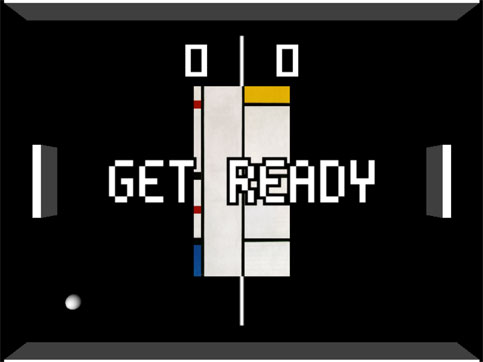
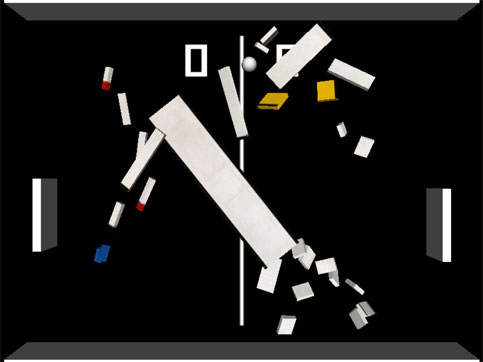
The reason that PONG is so popular among artists is that it is one of the very first video games, and therefore there is a large identification factor and a strong relationships between the game, the player and the artwork. PONG is also one of the easiest games in terms of both appearance and to learn to play, which paradoxically makes it so easy to transform and use in different contexts. The phrase “less is more” seems in this case a good explanation why PONG has inspired so many artists in recent years.
Pong Mythos – http://pong-mythos.net/index.php?lg=en
Natahalie Bookchin – The Intruder http://bookchin.net/intruder/
Guillaume Reymond – Game Over http://www.notsonoisy.com/gameover/
Anders Visti – PONGdrian v1.0 http://www.andersvisti.com/arkiv_grafik/pongdrian.html
An Interview with Heath Bunting – Part 1
I first met Heath when I moved to Bristol (UK) in 1988. It felt important, even profound. Not in a ‘jump in a bed’ kind of way. Yet our meeting did seem life changing somehow, to the both us. We hit it off and we collided – as equals – our collisions resonated, it shook our imaginations. From then on our paths, our lives connected and clashed regardless. We regularly challenged each other through constant, critical duels of dialogue; about activism, art, technology and ideas surrounding different life approaches and philosophies. From 1988 – 1994 (just before the Internet had properly arrived), in Bristol and London we collaborated on various projects such as pirate radio, street art and the cybercafe BBS – Bulletin Board System. We then went our separate ways exploring our own concerns more deeply, but continued to meet every now and then. Us both meeting in Bristol changed both of our worlds, it built the grounding of where we are now.
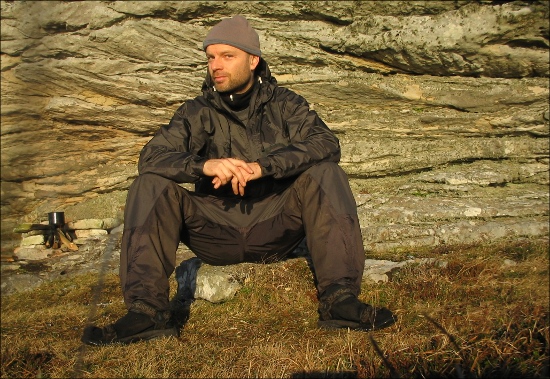
Heath founded the Irational.org collective in 1995, a loose grouping of six international net and media artists who came together around the server irational.org. The collective included Daniel Garcia Andujar / Technologies to the People (E), Rachel Baker (GB), Kayle Brandon (GB), Heath Bunting (GB), Minerva Cuevas / Mejor Vida Corporation (MEX) and Marcus Valentine (GB).
Heath Bunting’s work manifests a dry sense of humour, a minimal-raw aesthetic and a hyper-awareness of his own artistic persona and agency whilst engaging with complex political systems, institutions and contexts. Crediting himself as co-founder of both net.art and sport-art movements, he is banned for life from entering the USA for his anti GM work, such as the SuperWeed Kit 1.0 – “a lowtech DIY kit capable of producing a genetically mutant superweed, designed to attack corporate monoculture”. Bunting’s work regularly highlights issues around infringements on privacy or restriction of individual freedom, as well as issues around the mutation of identity; our values and corporate ownership of our cultural/national ‘ID’s’, our DNA and Bio-technologies “He blurs the boundaries between art, everyday life, with an approach that is reminiscent of Allan Kaprow but privileging an activist agenda.”[1]
In this two part interview we will discuss his current work within two distinctive areas of digital culture and sport-art starting with The Status Project, which studies the construction of our ‘official identities’ and creates what Bunting describes as “…an expert system for identity mutation”. His research explores how information supplied by the public in their interaction with organisations and institutions is logged. The project draws on his direct encounters with specific database collection processes and the information he was obliged to supply in his life as a public citizen, in order to access specific services; also on data collected from the Internet and from information found on governmental databases. This data is then used to map and illustrate how we behave, relate, choose things, travel and move around in social spaces. The project surveys individuals on a local, national and international level producing maps of influence and personal portraits for both comprehension and social mobility.
Marc Garrett: For many years now, your work has explored the concept of identity, investigating the various issues challenging us in a networked age. The combination of your hacktivist, artistic approach and conceptual processes have brought about a project which I consider is one of the most comprehensive, contemporary art projects of our age. The Status Project, deals with issues around personal identity head-on.
Why did you decide to embark on such a complex project?
Heath Bunting:
Three reasons
1. the network hacker
the network hacker fantasises about unlimited access to all systems made available through possession of treasure maps, keys and navigation skills
2. the Buddhist
the Buddhist intends to destroy the self and become only the summation of environmental factors plus find enlightenment in even the most banal bureaucracy
3. the computer scientist
the computer scientist aims to find comfort and hidden meaning in complex data
I am all three and am attempting to combine the obsessions of each into one project.
So far I have
Created a sketch database of the UK system with over 8000 entries
Created over 50 maps of sub-sections of the system to aid sense of place and potential for social mobility
Created system portraits of existing persons
Created software to generate new identities lawfully (off the shelf persons) and sold these identities
I am currently adding more data to the database. Which is split between the human being (flesh), the natural person (strawman) and the artificial person (corporation). Remaking maps using upgraded spider software, researching how to convert my identity generating software into a bot recognised under UK law as a person; and hence covered by the human rights act i.e. right to life and liberty; freedom of expression; peaceful enjoyment of property. I am very close to achieving this.
Did you know that 75% of the human rights act applies to corporations as well as individuals? If you were afraid of corporations in the 90’s and noughties then be very afraid of the automated voices that speak to you on stations or programs that transact currency exchanges, as they will soon be your legal equals as with all Hollywood propaganda, the reverse is true. The human beings will be the clumsy, half wit robot like creatures serving the new immortal ethereal citizens. If you think I am mad or joking, check back in 10 years time.
MG: Way back in 1995, there were already various groups and individuals (including yourself) who were critiquing human relationships whilst exploiting networked technology. Creative people who were not only hacking technology but also hacking into and around everyday life, expanding their skills by changing the materiality, the physical and immaterial through their practice. It was Critical Art Ensemble (CAE) who in 1995 said “Each one of us has files that rest at the state’s fingertips. Education files, medical files, employment files, financial files, communication files, travel files, and for some, criminal files. Each strand in the trajectory of each person’s life is recorded and maintained. The total collection of records on an individual is his or her data body – a state-and-corporate-controlled doppelganger. What is most unfortunate about this development is that the data body not only claims to have ontological privilege, but actually has it. What your data body says about you is more real than what you say about yourself. The data body is the body by which you are judged in society, and the body which dictates your status in the world. What we are witnessing at this point in time is the triumph of representation over being. The electronic file has conquered self-aware consciousness.”[2]
15 years later, we are dealing with an unstoppable flow of meta-networks, creeping into every area of our livng environments. We have mutated, become part of the larger data-sphere, it’s all around us. As you describe, it seems that we are mutating into fleshy ingredients, nourishing a technologically determined world.
HB: Data body is quite a good way to think about it. I consider each human being to possess one or more natural person(s) and each natural person to control or possess none, one or more artificial person(s) (i.e. corporation). The combined total of natural and artificial persons possessed or controlled by a human being can be thought of as their databody. As human beings, we have quite a lot of control over our persons (natural and artificial). The problem is that we either don’t realise this or it takes the time to manage them. It’s possible to obtain a corporation for less than the price of a train ticket between Bristol and London. Why do so many people live without one? Could anti corporate propaganda have something to do with this ?
“What is most unfortunate about this development is that the data body not only claims to have ontological privilege, but actually has it. What your data body says about you is more real than what you say about yourself.”(CAE).[2]
Only if you remain a passive user of it. The natural person is only linked to the human being through such fine devices as a signature, which we decide to give or withhold, most human being’s natural person is actually owned by the government and borrowed back by the human being. This does not have to be the case as we can create and use our own persons.
“The data body is the body by which you are judged in society, and the body which dictates your status in the world. What we are witnessing at this point in time is the triumph of representation over being. The electronic file has conquered self-aware consciousness.”(CAE).[2]
I would say laziness has triumphed over mindfulness. All information about the functioning of natural persons is easily available, all persons have the same rights unless they choose not to claim them. Instead, people choose to get lost in their own selves and dreams, indulged by those that seek to profit from their labour.
Technology is becoming more advanced and the administration of this technology is becoming more sophisticated and soon, every car in the street will be considered and treated as persons, with human rights. This is not a conspiracy to enslave human beings, it is a result of having to develop usable administration systems for complex relationships. Slaves were not liberated because their owners felt sorry for them, slaves were given more rights as a way to manage them more productively in a more technologically advanced society.
MG: Getting back to the part of your project which incorporates a complex process of compiling and creating ‘off the shelf persons’, as you put it. Are you using some of the collected data as a resource to form these new identities, or is it a set of ‘hybrid’ identities?
HB: Please expand this question further…
MG: Near the beginning of the interview, you mention that you “Created software to generate new identities lawfully (off the shelf persons) and sold these identities.” I am asking whether most of these ‘new identities’ that you have formed and sold are, a mixture of different bits of information. Like data-versions of body parts from a machine or vehicle, reused, recycled to recreate, make new hybrid identities?
HB: The identities I can create are all new and legal, they are a portfolio of new unique legal relationships created with existing artificial persons. For example, registering with Tesco Clubcard either creates or consolidates the new natural person http://status.irational.org/identity_for_sale – for a new natural person to be credible, it must be coherent and rational. This is achieved simply by following the rules of the system, the more interrelating links with other persons, the more real the new person becomes.
Off the shelf natural person.
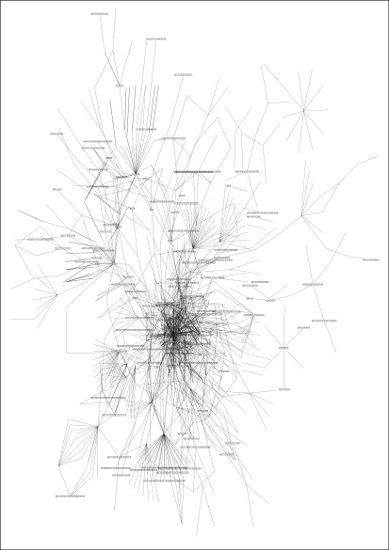
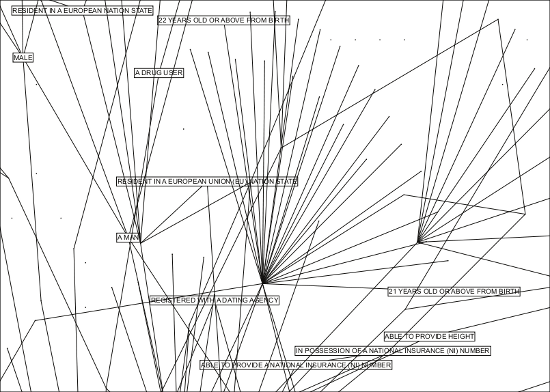
Comes with supporting physical items:

personal business cards, boots advantage card, marriott rewards card, cube cinema membership card, baa world points card, tesco clubcard, vbo membership card, WHSmith clubcard, silverscreen card, airmiles card, somerfield loyalty card, post office saving stamps collector card, virgin addict card, subway sub club card, dashi loyalty card, t-mobile top up card, european health insurance card, waterstone’s card, 20th century flicks card, bristol library card, co-operative membership card, nectar card, oyster card, bristol ferry boat company commuter card, love your body body shop card, co-operative dividend card, bristol credit union card, choices video library card, national rail photocard, bristol credit union account, bristol community sports card, star and garter public house membership card, first class stamp, nhs donor card, winning lottery ticket (2 GBP), t mobile pay as you go mobile and charger…
Upgradable to both corporate and governmental levels.
(500.00 GBP) – SOLD
MG: I can see on the web site, in the section The Status Project – Potentials that there are various ready-mades, ‘Off the shelf natural person – identity kits’. Am I right in presuming that there are individuals out there who have bought and used these kits?
HB: These are mostly existing persons, only one of them was synthetic. I will be setting up a small business soon though to manufacture and sell natural person.
MG: On exploring deeper into the Status Project data-base, there is link to a file called ‘In receipt of income based job seeker’s allowance’. This information is taken from ‘Jobcentre plus’, a UK government run organisation and on-line facility, inviting visitors to search for jobs, training, careers, childcare or voluntary work. How important was this source in compiling data for your database of individuals?
HB: This is only one record of over 8000 in the database, each record refers to one or more other record(s) in the database.
MG: What projects relate to/have influence on The Status Project in some way, and what makes them work?
HB: They Rule[3] – It allows users to browse through these interlocking directories and run searches on the boards and companies. A user can save a map of connections complete with their annotations and email links to these maps to others. They Rule is a starting point for research about these powerful individuals and corporations. A glimpse of some of the relationships of the US ruling class. It takes as its focus the boards of some of the most powerful U.S. companies, which share many of the same directors. Some individuals sit on 5, 6 or 7 of the top 500 companies.
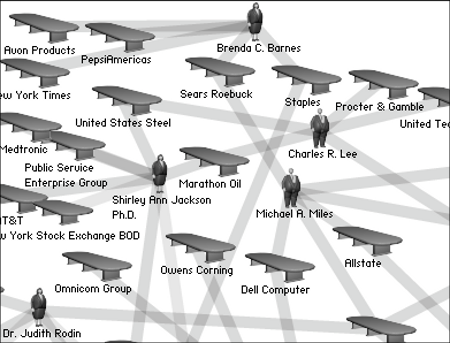
“Go to www.theyrule.net. A white page appears with a deliberately shadowy image of a boardroom table and chairs. Sentences materialize: “They sit on the boards of the largest companies in America.” “Many sit on government committees.” “They make decisions that affect our lives.” Finally, “They rule.” The site allows visitors to trace the connections between individuals who serve on the boards of top corporations, universities, think thanks, foundations and other elite institutions. Created by the presumably pseudonymous Josh On, “They Rule” can be dismissed as classic conspiracy theory. Or it can be viewed, along with David Rothkopf’s Superclass, as a map of how the world really works.”[4]
Bureau d’etudes – distribution.
http://bureaudetudes.org/
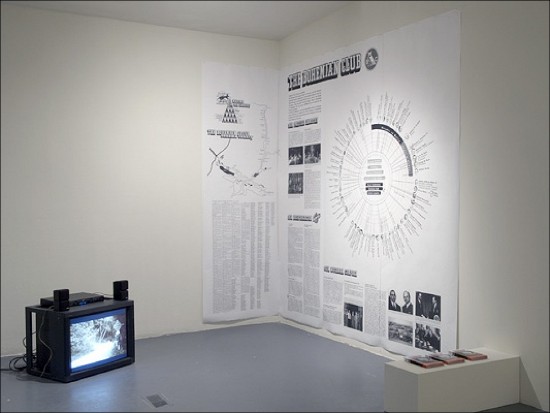
The Paris-based conceptual group, Bureau d’etudes, works intensively in two dimensions. In 2003 for an exhibition called ‘Planet of the Apes’ they created integrated wall charts of the ownership ties between transnational organizations, a synoptic view of the world monetary game. Check the article ‘Cartography of Excess (Bureau Bureau d’etudes, Multiplicity)’ written on Mute by Brian Holmes in 2003.[5]
MG: The sources of data for the Status Project seem to vary in type. Where do you collect them from and how do you collect the different kinds of data?
HB: It ranges from material instruments such as application forms right through to constitutional law and then common sense .
MG: How do you propose the Status Project might be used as a system for ‘identity mutation’?
HB: I want to communicate the fact that people in the UK can create a new identity lawfully without consulting any authority. I intend to illustrate the precise codification of class in the UK system, and there are three clearly defined classes of identity in the UK: human being, person and corporate . I am looking at the borders between these classes and how they touch each other, this can be seen with my status maps. Also, I intend to create aged off-the-shelf persons for sale similar to off-the-shelf corporations.
Taken from the front page of the Status Project:
Lower class human beings possess one severly reduced natural person and no control of an artificial person.
Middle class human beings possess one natural person and perhaps control one artificial person.
Upper class human beings possess multiple natural persons and control numerous artificial persons with skillful separation and interplay.
End of Part 1.
————–
Decode: Digital Design Sensations
The Victoria and Albert museum, London
8 December 2009 – 11 April 2010
Decode: Digital Design Sensations at the Victoria and Albert Museum (V&A) brings the state of the art in art computing to a venerable cultural institution. Everything from the posters and banners around town to the hoardings on the entrance to the gallery containing the show makes it clear that Decode is a serious cultural event. It’s a spectacle, a dark space alongside the well-lit galleries of the V&A, drawing you in with points of light and distant sounds. The crowds are reassuring for the popularity of art computing yet disconcerting for the experience of the art at times.
Don’t forget to ask for a catalogue as you hand over your ticket on the way in. The sponsor’s foreword should raise a smile to anyone familiar with the software industry, but the introductory essay (which only occasionally becomes the latest casualty of the confusion that the word “open” shows), the details of works in the show and the interviews with Golan Levin and Daniel Rozin are all very informative. The catalogue also draws attention to Karsten Schmidt’s specially commissioned graphic identity for the show, which can be downloaded and modified as Free Software.
The show is divided into three sections. Generative art, data visualisation, and interactive multimedia (or, as the catalogue puts it – Code, Network and Interactivity).
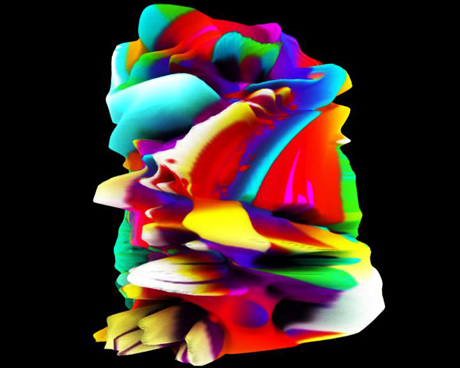
The generative artworks suffer in comparison to the other pieces by being mostly small-scale screen based pieces. However appealing the images are on the screen (and they are) they cannot compete with the projections and three dimensional installations of the other sections. With the exception of an interactive version of the video to Radiohead’s House of Cards by James Frost and Aaron Koblin, the work does not refer to the human figure or to the viewer, another feature of many of the most popular pieces in the other sections. And apart from Matt Pyke’s typographic totem pole, my other favourite piece of the section, the work is calm. Beautiful, but calm. It would reward prolonged contemplation in a quieter environment and might benefit from presentation on a larger scale to better bring out its aesthetic qualities. But this is not that environment, and that presentation is not given to the work here.
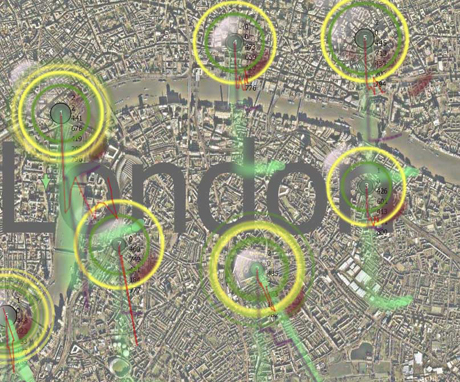
The data visualisation section has more projections and custom hardware, and also has more human interest. The emotion of We Feel Fine by Jonathan Harris and Sep Kamvar, the surveillance state expose of Stanza’s Sensity, CCTV assemblages, Make-Out, the porn-inspired kissing figures of Rafael Lozano-Hemmer and the social data visualizations of Social Collider by Sascha Pohflepp & Karsten Schmidt are sometimes less visually sophisticated than some of the generative pieces, but address current social and technological developments more directly. The world wide web is twenty years old, it has drawn in the mass media and media feeds from the real world, and many of its users produce and encounter gigabytes of data over time. Representing and exploring that technological and cultural environment is something that art can do and that art is particulalry well placed to do given the importance of the aesthetics of interfacing and visualisation to the contemporary web.

The interactive multimedia section contained the real crowd pleasers of the show, although some of the pieces had “out of order” notices on them when I visited. Yoke’s virtual reality Dandelion Clock controlled by a hairdryer, Ross Phillips’s Videogrid, a physically interactive group portrait and Daniel Rozin’s Weave Mirror, a cybernetic sculpture-cum-display-screen. They all give their audience an aesthetic experience that briefly changes their relationship to the world, and in some cases shows them themselves in that new relationship. Interactive multimedia installation is clearly due a resurgence.
The V&A have presented Decode as a design show. I was struck by this framing of the work when I visited the show, and most of the people I have spoken to about the show since have commented on it as well. Many of the participants are graphic designers or work in design as well as art and education, but much of the work would be poorly served by being regarded as design rather than as art. It is not advertising, or presentation of anything other than itself for the most part. Where the work is information design, the information has been chosen by the designer. That said the art computing MA I attended as a student had to be called a “design” course to get funding, so possibly this is a constant. And the V&A have done a great job of presenting the work and letting it speak for itself to the visiting crowds.
This isn’t quite Cybernetic Serendipity 2.0. It excludes the conceptually and performatively, rougher edges of contemporary art computing. But these exclusions are largely practical; there is no livecoding and there are no email or self-contained web browser-based works. Some of the work is strikingly but subtly political in its representation of current social and political trends such as surveillance, online pornography and the death of privacy.
The V&A have done the conventional artworld and the general public a great service by presenting Decode. The show contains enough big and up-and-coming names in art computing and digital design to provide a convincing if necessarily incomplete survey of the contemporary scene. Decode also serves an important role for artists and students with an interest in or a stake in art computing by focussing attention on what others have achieved that can be built on.
Decode shows the achievements of the personal computing and web eras of art computing becoming established with and recognized by the broader arts establishment. The danger is that the story will finish triumphally here. Processing has become the new Shockwave, and particle systems and shape grammars are not enough in themselves for long without an accompanying progressive and deeper deeper engagement with the aesthetics and history of art, technology, wider society, or all three. Art computing is not immune to technical and aethetic conservatism. To avoid this I think that it needs to intensify, to become more like itself; to become more beautiful, to tackle larger datasets, to become more interactive. In other words, it needs to build on the achievements gathered together and presented here.
http://www.vam.ac.uk/exhibitions/future_exhibs/Decode/
The text of this review is licenced under the Creative Commons BY-SA 3.0 Licence.
Curated by Carolyn Kane for Rhizome September, 2009.
#60605 plus #20101 does not equal black, but it looks like it to me. And despite Newton’s insistence, a rainbow is never made from seven colours in neat lines, nor can I see millions of colours on my calibrated monitor. It is more likely that each day I engage with the screen as a greenish-blue glow infused with hits of magenta. Or as it is today: a summer grey of sea fog glimpsed through the rain. Is that a colour? Carolyn Kane curated HTML Color Codes in order to ask these questions of the relationship between colour, code, and subjectivity. Tracing a carefully structured path through twelve artworks Kane seeks to examine whether artists working with the Internet are limited to a ‘ready-made’ colour palette. Asking if digital colours reflect the programming languages that have been adopted, Kane considers whether the Internet adds its own rules for colour through the adoption of the hexadecimal system of colour values. Does the language determine the content?
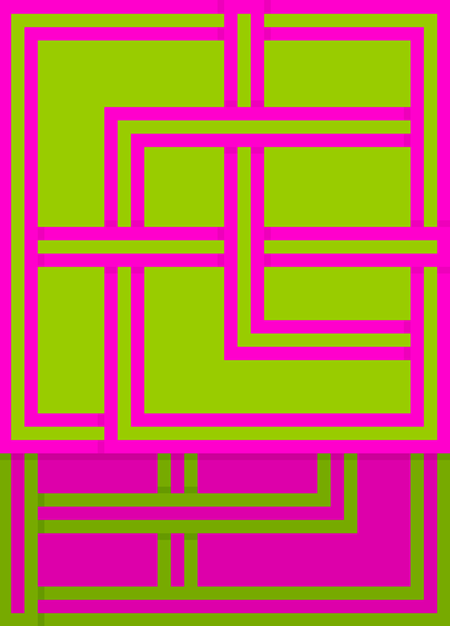
The answer is, not quite. It all depends on where and how the viewer approaches the screen. Rather than trying to be paintings these works engage with the materiality of digital colour and the manipulation of a different kind of flat predetermined surface – the screen. Chris Ashley gives us rectangles within rectangles, Dlsan manipulates circles within circles, and Michael Atavar offers the blue screen of an empty window with text written as if in the condensation of a cold morning. It is the noise of the digital image embraced by the inadequacy of a gif representation of a treasure heap of digital gold in Jacob Broms Engblom’s “Gold”, or the absence of any controlling frame in Owen Plotkin’s “Firelight” and the flickering spaces nested within and alongside one another in Rafael Rozendaal’s “RGB” that suggest different rules for the digital image. In these latter works the illusion of immediacy raises a spectre of some kind of phenomenological directness.
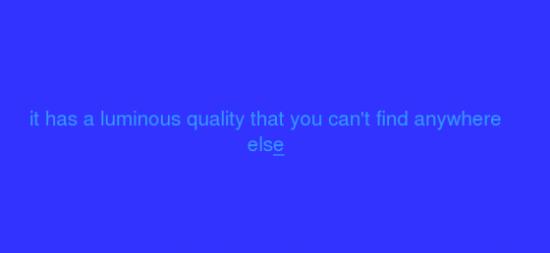
Twentieth century colour field painting was never a single set of experiments yet it carried within it a set of cultural and formal presuppositions. The digital colour field has its own baggage set. It is inbetween: inbetween code and software, browser and window, network and bandwith. More often than not the experience of the digital colour field is the result of an image within an image or a screen within a screen. Despite its origins in hexadecimal notation digital colour is not a ready-made, but an experience and a process of light and interaction. Anyone who has attempted to capture or translate a colour between screens knows that accidents occur. Noah Venezia’s “The Rainbow Website” suggests that a kind of synaesthesia can be experienced through the screen, that colour exceeds the values assigned to it. Andrew Venell’s “Color Field Television” mimics the flicker of experimental film from the 1970s. Perception becomes a process of seeing the colours inbetween, the work turns back on itself mirrored within a screen. Structural film experiments were about exploring more than perception they too turned back to the medium. Morgan Rush Jones gets even closer with the phased colour space of “Number of ManufacturingIndustriesbyNumberof Product ClassesinanIndustry”. The work is simultaneously overloaded with image and abstracted from it. There is a strange congruence reflected here: in their formality these works do not push new experimental boundaries but reflect older ones.
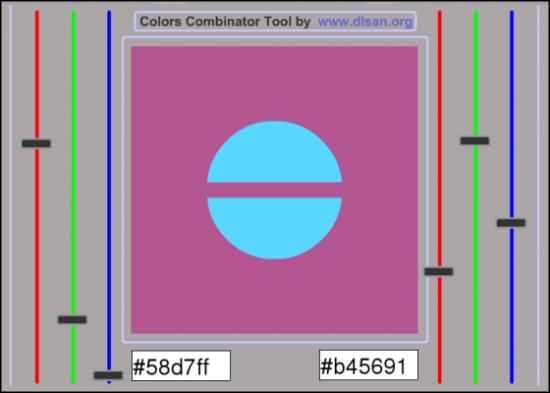
Michael Demers explicitly engages the materiality of the digital medium by establishing a series of systems within which abstraction can occur. Sampling Morris Louis’s oil painting “Where” from 1960, Demers generates a sequence of flat colour planes (windows) from left to right that disappear as quickly as they appear. The drip and movement of Louis’s work is rendered temporal. Brian Piana’s “Elsworth Kelly Hacked my Twitter” also addresses the temporality of the digital. Real-time data orders the compositional frame in a direct chronological sequence. Each square is a representation of an invisible network. Manipulation of the scale, size and shape of the frame is left to the viewer. For me it is Elna Frederick’s “@ = landscape” that allows an interactive experience of the subjective dimension of colour that is specific to the digital. The click of a mouse becomes the experience of putting a finger into a stream of water and disturbing the flow. It is not necessarily the colour that makes the rain but the movement and the belief instilled in us from Super Mario that onscreen fluffy white blobs potentially contain rain. There is a cool sensuousness to the trickle of pixels as it becomes water and when left alone returns to simply being yet another onscreen blue.
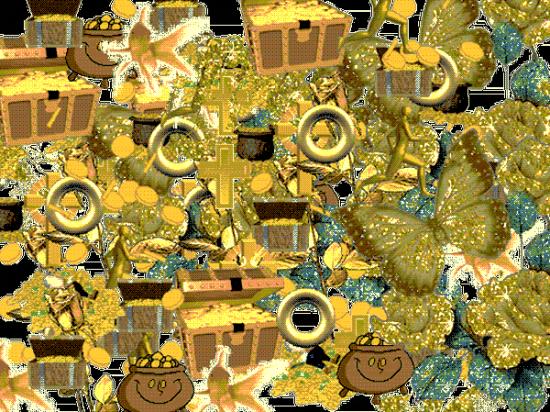
There is a risk of over determination in this show, the kind of visual parity that results from too many works looking at the same thing and becoming somewhat redundant. It is the quiet spaces between the works, the mutable changing structures of the blue screen that resist this limitation. As long as bandwidth remains with us, and the links stay live, these works are infinite and through their repetition we experience an abyss of generated colour and code. These are predominately forms consisting of colour alone, and surprisingly, that is enough. This is how the medium of digital colour should be approached. There is no translucency, but there is an unlimited interplay of substitutions.

Digital Pioneers
Victoria And Albert Museum
7 December 2009 – 25 April 2010
(Illustration – Herbert W. Franke, Squares (Quadrate), screenprint, 1969/70)
Digital Pioneers is a deceptively modest exhibition hidden away in two rooms upstairs at the Victoria and Albert Museum. It contains some of the earliest examples of art produced using electronic devices and computing machinery along with some creative later work.
The bulk of the art in the show was produced between the 1950s and the 1970s. This means that it was produced or recorded as photographs from cathode ray tubes or as print-outs from teletypes and pen plotters. Some of this work will be familiar to students of the history of art computing through reproductions but as with most art reproductions do not tell the whole story.
Seeing the actual work itself is as important for art made using the paraphernalia of early digital computing as it is for art made with linseed oil and cotton duck. What Digital Pioneers drives home is just how deeply and intentionally involved early computer artists were in manipulating the aesthetically limited but socially and ideologically key technology of computing machinery. This leaves both social art historians and code aesthetes with some explaining to do, or at least some catching up.
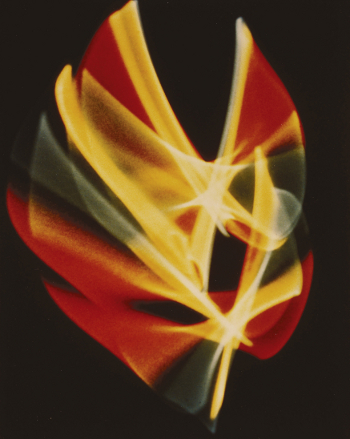
The show starts in the 1950s with the algorithmic and electronic but non-digital and non-computational photographs of oscilloscope patterns by Ben Laposky and screen-prints of photographs by Herbert W. Franke. Most of the works included in the show are prints of one kind or another, and these are no exception. They record the movement of a beam of light on a cathode ray tube as other prints in the show record the movement of a plotter pen or a laser in a laser printer.
If Constructivism was socially realistic for revolutionary Russia then these works are socially realistic against the backdrop of NATO’s military-industrial-educational complex. They turn the technology of that culture back on itself, using it not to produce weapons or market products but to produce aesthetics. This reclaims a space for perception and contemplation that is not simply militarily or economically exploited. The obsessively quantitative managerial culture of spreadsheets and inventories yields uncomfortably to the qualitative culture of aesthetics, productively so. These strategies continue through the show. Technology is pushed beyond its intended uses to address cultural tasks.
Many of the prints in the show have a similar number of stages of production to Franke’s process of screen, then photograph, then silkscreen prints. His later plotter-drawn work is also screen printed, as are Klee-inspired generative images by Frieder Nake, and Charles Csuri’s random montage of flies. I don’t know what to make of this. It feels like something should have been lost in the move from an original to a print but plotter drawings aren’t particularly originals, being already representations of data structures in the computer’s memory.
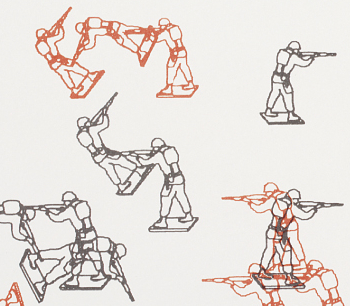
Csuri’s lithograph of randomly placed vector outlines of toy soldiers was produced in 1967 during the Vietnam War, a war that ran as long as it did in no small part due to game theory and computer simulation. There are two armies, one plotted in red and one plotted in black. They meet and presumably battle inevitably but only by chance. There’s more of the outside world in art computing than is often assumed.
William Fetter’s wonderful three dimensional vector images of human figures produced for the aircraft manufacturer Boeing, a lithograph from the Cybernetic Serendipity show of 1968, also deal with the human figure within the military-industrial complex. We should not be confused about the status of such images as art by the use and funding of computer graphics by corporations any more than we should be confused about the status of painting as art by the use and funding of oil painting by the Catholic church.
Ken Knowlton’s cheeky nudes and other typographic images of the 1960s and 1980s are an effective escape or release from the constraints of corporate information culture. I’d seen them many times in reproduction but again they are much richer visually as prints.
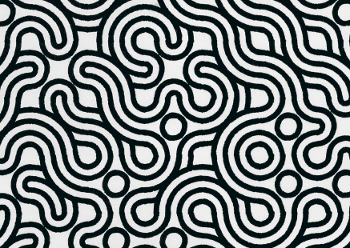
More detailed systems-based patterns emerge in the 1970s in the work of artists such as Manfred Mohr, Paul Brown, and Vera Molnar. This era that epitomises the approach of rule based serendipity so beloved of later Generative artists. These images are pleasurable to look at but also contain visual or psychological complexity. They also continues to push the performance of computer systems outside of their intended use cases.
By the late 1980s the technical achievements of computerised mass media were exceeding those of art computing. Pen plotters, where they were still used, were no rival to laser printers. Rendered images had to compete with the earliest rumblings of Pixar and Adobe. The increasing availability of digitally designed fashion and entertainment meant that far from being the exception, digital elements in the lived visual environment were becoming the rule.
The reactions to this that art computing in general have made are the subject of the Decode show that is also running at the V&A. Digital Pioneers instead follows the printmaking thread of art computing into the present day where artists such as Roman Verostko, Mark Wilson and Paul Brown have continued with the systems art all-overness of print-based art computing.
To continue in this way marks such work out as something different from the all-pervasive presence of digital imagery in the visual environment. The work has to look different from graphic design and new media rather than from CAD plots or teletype reports, and it does. These works remind us of the history and of the wiring under the board of digital culture. They successfully resist any attempt to reduce them to digital mass media images comparable to the output of the design software that they exist in the same era as.
This switch away from early adoption is necessary to maintain a figure/ground relationship (or a critical distance, or a constructive difference) between the general level of technology in society and the level of technology in art computing. It is not the only solution to this problem, as the Decode show demonstrates, but it is not a retreat.
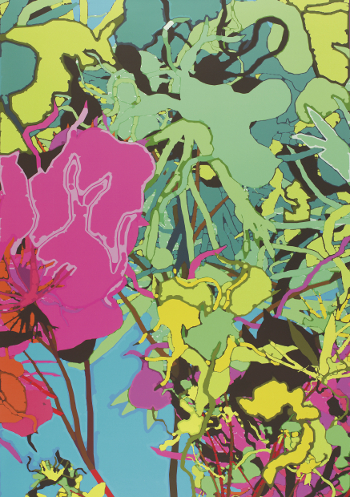
As a long time fan of Harold Cohen, I found the show’s inclusion of computer generated works from his very earliest 1960s felt-tip-on-teletype-print experiments with generating figure and ground relationships computationally to a recent large-scale full-colour inkjet abstract was a real treat. Plotter drawings of abstract shapes from the 1970s and of human and plant forms from the 1980s show the progress that Cohen made in using computers to rigorously explore how art and images are created and function. Being able to study this work close-up reveals details such as debugging information in the teletype prints and the operation of the collision-detection algorithm in the 1980s images. And it provides the pleasure of seeing detailed, well-composed drawings.
This is a recurring experience in Digital Pioneers. Despite the uniformly dismissive attitude of both popular and academic criticism towards art computing the fact is that when you actually see the work in the flesh it rewards sustained attention. Not as historical or technical curiosities, but as images with cultural and aesthetic content and resonance. To ignore this and to continue to claim that this art is less than the sum of its parts would ironically be to fall prey to a particularly extreme attitude of technological determinism.
The show also contains displays of ephemera including magazines and books such as back issues of the Computer Arts Society’s “PAGE” and William Gibson’s supposedly self-erasing story on a floppy disk “Agrippa”. I’d not seen an actual copy of “Agrippa” before. PAGE back-issues are available online, but their presence here flags an important point.
The revived Computer Arts Society has been key in promoting and deepening understanding of the history of art computing in the UK. The Digital Pioneers show and its excellent accompanying book are a good example of how CAS’s project has spread out into more traditional cultural institutions, and many of the images and exhibits in the show come from the archives that CAS has donated to the V&A.
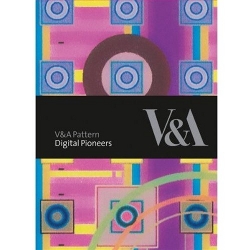
The “Digital Pioneers” book (by Honor Beddard and Douglas Dodds, V & A Publishing, 2009) serves as a catalogue for the show . It contains an informative introductory essay and printed images of many of the works on display as well as a CD-ROM with 200dpi scans of them. These scans are high-resolution enough to be able to examine the images in some detail, although they are no substitute for seeing the images in the gallery. A slightly excessive copyright licencing notice is the only indication that the book has in fact been produced as one in a series of pattern books from the V&A. It’s a must-have if you enjoy the show or have any interest in early art computing.
Digital Pioneers is an opportunity to really look at the work of early computer artists and to evaluate that work directly rather than through the medium of poor reproductions or through the fog of received critical opinion. As a slice of artistic history that just so happens to have been produced on computer it contains much to reward both the eye and the mind.
Update: Two recently published books provide more extensive background to the period covered by the show, making the history of this fascinating era available to current practitioners –
White Heat, Cold Logic: British Computer Art 1960-1980‘ edited by Charlie Gere et al covers the history of British computer art and the Computer Arts Society.
A Computer in the Art Room by Catherine Mason describes the relationship between British art schools and computing (which is how I became interested in this area in the first place).
The text of this review is licenced under the Creative Commons BY-SA 3.0 Licence.
Featured image: printed out photographs of the streets, pasted them back onto the surfaces where they were taken, and then rephotographed them
When we visited New York this spring, we met in Willamsburg, Brooklyn with Christina Ray, founder of Glowlab, multimedia arts lab for experimental psychogeography. According to the article ‘Preliminary Problems in Constructing a Situation’, in Situationniste Internationale No. 1 (1958), psychogeography studies ‘the specific effects of the geographical environment, consciously organised or not, on the emotions and behaviour of individuals’.
We wandered the streets, chatting and observed the effects of the emotions and behaviour of the local communities on the streets of Brooklyn. Christina described for us the significance of various tags, stickers and stencils and told us about the brewing turf wars between the recent influx of middle class artists and disgruntled locals whose families have lived in the area for generations, but who were facing the consequences of creeping gentrification and the threat of fast-rising rents. The diverse concerns of the local community were spelt out in frenetically pasted, posted, taped and painted signs, tags, images and messages of all sorts. Every wall, every piece of street furniture shares its surface with an accretion of eye-catching stickers, advertising local bands, spray painted decorations, tags and statements of protest, like ‘more yuppie bullshit’.
The Graffoto project divides into three distinct parts. Graffoto 01 documents the richly textured expressivity of the Brooklyn communities. The social commentary mixes with exuberant, colourful and stunningly executed murals and sometimes inexplicable expressions of appreciation for the absurdity of life, such as ‘saving to buy air conditioner- saving to buy a bike (written and illustrated on 2 strips of masking tape stuck to a wall heavy with graffiti). These images draw you to spin out narratives. Sometimes further clues to the complete story lie in the details of the surroundings, whilst other accounts are completely opaque to the outsider but suggest a connection of great significance to individuals, groups or events in the locality.
In Graffoto02, MOTC (man of the crowd) has printed out photographs of the streets, pasted them back onto the surfaces where they were taken, and then rephotographed them in situ. I guess that in the streets these images act as a mirror of sorts for the street artists of Brooklyn. Also as a sign that the guttural and wonderfully articulated expressions of protest, humour, threat and joie de vivre can be both appreciated and participated in but also consumed by the world of mediation. These second stage images do evoke a strange threat of surveillance.
The final layer of the Graffoto project invites us to participate by sending in images of our streets for others to print out and post in their own public localities. Alternatively we can download and print an image from the collection and paste it onto the lamp-post outside our own doors.
We can only imagine these images so rich with local texture and information will start to appear in all the lands of the world; turning up like tourists, marked out by their strange dress, stranger cultural values and the blind spots afforded them by their communities. Or perhaps more like illegal immigrants, their language will be foreign, their deepest and most obvious narratives veiled, their protests displaced and irrelevant to the communities amongst which they find themselves.
MOTC offers a strategy for border crossing. OK, we loose much of the texture, the information and with these, many pieces of the narrative but something equally important is facilitated here. The photographs and printouts of the graffiti are a sign of something foreign, mediated, stuck and mingling in a community that isn’t sure why it’s there, whether it’s any of their business and whether they like it.
August 2003